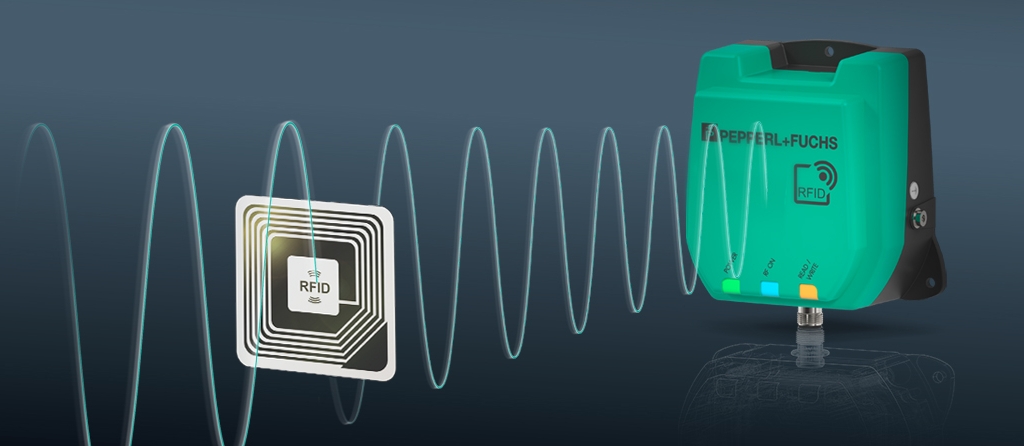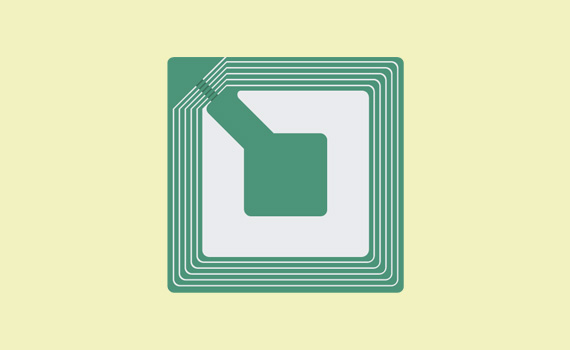Frequently Asked Questions (FAQ) on RFID (Part 4): RFID Tags
Content of This Article
Frequently Asked Questions (FAQ) on RFID (Part 4): RFID Tags
1. What Is an RFID tag?
RFID tags carry information on a certain object or transport container. The size of an RFID tag can vary from the dimensions of a match head to a brick. While some tags are used simply as an attachable ID for an object, others carry a variety of different attributes relating to the object. These “identifiers” can be individualized according to the requirements of the specific process they are used in. Typically, an RFID tag (also called an “RFID transponder”) consists of an application-specific integrated circuit (ASIC) and either a small coil of wires or printed conductive paths that function as an antenna. These components are usually mounted to different kinds of protective packaging like plastic or silicon.
2. What Is the Difference between Active and Passive RFID Tags?
Another distinction that you will most likely stumble upon when dealing with RFID is active versus passive RFID tags. Active RFID tags feature a transmitter and their own integrated power source. This source powers the application-specific integrated circuit of the tag and is also used to transmit a signal from the tag’s antenna to an RFID reading device.
Passive RFID tags have no integrated battery or power source. Instead, they draw power from an RFID reader that sends out electromagnetic waves. These waves induce a current in the tag’s antenna and enable mutual communication between reader and tag. Additionally, there are semi-passive RFID tags available on the market. These semi-passive tags use a battery to run the integrated circuit of the tag, while the actual communication happens by drawing power from the RFID reader.
When it comes to tracking high-value goods over long distances, active and semi-passive tags are an excellent choice. For mass tracking of low-cost items over smaller distances, passive RFID tags are the right solution, as they are significantly less expensive than active and semi-passive tags. Active RFID tags with batteries and long-range antennas tend to be bigger than passive tags. Depending on the RFID reader’s performance, they can achieve read ranges of up to 300 meters. Smaller low-frequency and high-frequency RFID tags are read from within 0.5 meter distance, and UHF tags are mostly read from 3 meters to 6 meters distance.
3. How Much Information Can an RFID Tag Store?
The amount of data that can be stored on a single RFID tag depends on the type of tag you are using. Simple tags that are just applied as IDs carry only a 96-bit or 128-bit serial number (“unique permanent identification” = UID). Most RFID tags for industrial applications are equipped with an up to 2 KB ROM, which is sufficient to store several different identifiers and the respective item information. Some manufacturers also offer special high-memory RFID tags that come with 4 KB to 8 KB of memory, and are applied in aviation. The upper end of the scale are military RFID tags: these have memory capacities as high as 128 KB.
4. Why Are There So Many Different Passive RFID Tags Available?
Taking a first look at RFID systems as a possible application solution, one might be stunned by the plethora of different tags available on the market. Where does that come from? RFID is a very versatile technology that fits in seamlessly and tag designs can be adapted quite flexibly to ideally fit specific use cases. A few examples: For animal identification, RFID tags are as tiny as possible and can be implemented underneath the animal’s skin. For identification of trees or wooden items, tags have the form of a screw or nail. For access control applications, RFID tags come as key rings. For identification of clothes, they can be attached to textiles in the form of an unobtrusive inlay (“Smart Label”). The pattern is obvious: RFID adapts to the application.
5. How Durable Is an RFID Tag?
When it comes to durability, you have to make the distinction between active and passive RFID tags. Once an active tag runs out of battery power, it is no longer usable. How long this might take depends on battery performance and application conditions. Longer reading distances drain more energy. Most active RFID tags feature long-life batteries to prolong the durability of tags as much as possible.
Passive RFID tags can achieve an extremely long lifetime, which makes initial investments in an RFID system really pay off. For instance, Pepperl+Fuchs provides passive RFID tags that are built for challenging industrial environments that can easily achieve more than 100,000 write cycles. FRAM tags can be rewritten almost an unlimited number of times. Some special tags with robust metal housings withstand temperatures of up to 220 °C. Others feature plastic housings and are highly resistant against water, chemicals, transformer oil, petrol, and heating oil. High IP types of protection attest to the overall sturdiness of these industrial RFID tags.
More Expertise on RFID!

Visit our “RFID Hub”! On this special website, we have collected further FAQs, application examples and videos for you on the topic of RFID in automation. If you have any questions, our experts look forward to your inquiry at any time.
More Information
Subscribe to our newsletter and receive regular news and interesting facts from the world of automation.
